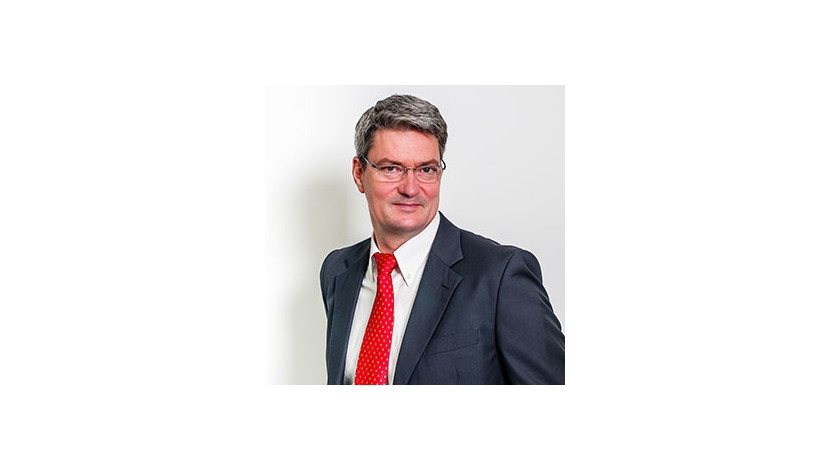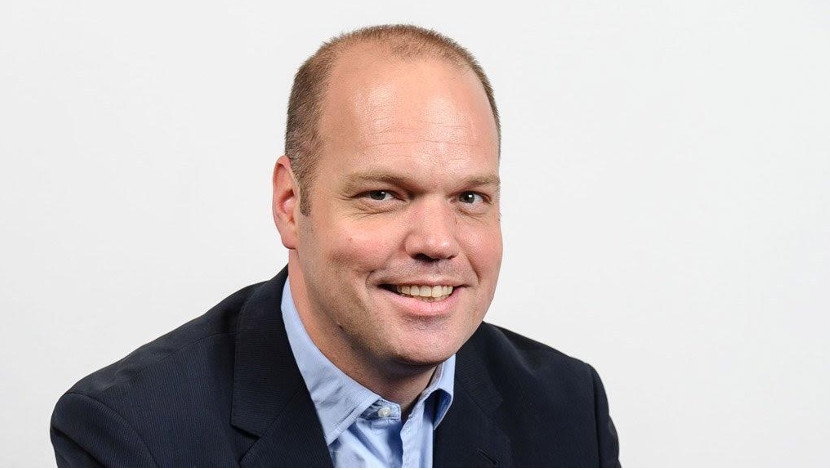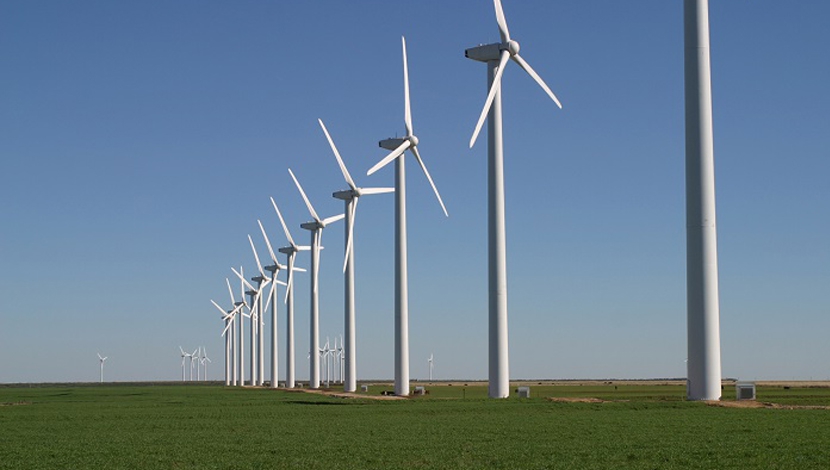
Loeriesfontein Wind Farm has announced that its wind turbine foundations are utilising one of the world’s lowest quantities of Portland cement
in the concrete formulation. The foundations are designed using an 89% replacement of cement, resulting in, what we believe to be, one of the world’s lowest carbon footprints for any wind farm foundation; according to research scientist, and head of Murray & Roberts’ Concrete Centre for Excellence, Cyril Attwell.
The first two bases, which were completed on 13 October, utilised an 80% replacement of Portland cement, whilst the remaining foundations use a unique design comprising 35kgs of high grade Portland cement per cubic meter, an 89% reduction from a standard concrete mix. This composition has resulted in the wind farm’s carbon footprint being reduced to approximately 90.7kg of carbon dioxide per cubic meter. Ground Granulated Corex Slag (GGCS), a by-product from the iron industry, is used to replace 89% of the cement. “Cement manufacturing is typically a highly energy intensive process. By substituting the cement with a by-product such as GGCS, we are able to reduce our carbon footprint considerably,” saidLeo Quinn, Project Manager for Loeriesfontein Wind Farm.
A twenty-eight day compressive strength test has been completed, which indicated that the 80% replacement ratio achieved an impressive strength of 55MPa (megapascals), and an expected ultimate strength of 100MPa, within a fifty-six day period. “The strength of concrete is measured in megapascals; theoretically a cubic metre of concrete that is rated 30 MPa, is able to withstand the weight of six bull elephants, whereas these foundations are able to withstand the approximate mass of 20 bull elephants standing on a square centimetre of concrete – a phenomenal feat,” demonstrated Cyril Attwell, Murray & Roberts Construction, Group Concrete & Research Manager.
A carbon footprint is defined as the total amount of greenhouse gases produced to directly and indirectly support human activities, expressed in equivalent tons of carbon dioxide (CO2). “The achieved reduction in our carbon footprint is phenomenal, especially considering that a standard 30MPa concrete as supplied by the ready-mix industry equates to a carbon footprint of approximately 300kgs to 350kgs of CO2 per cubic meter,” explained Leo Quinn, Project Manager for Loeriesfontein Wind Farm.
Traditionally, 30 MPa concrete requires between 300kg and 350kg of ordinary cement per cubic metre. But now scientists working for Murray & Roberts have developed a technology that meets the 30 MPa standard using just 25kg of cement or even less. Not only does it meet the standard, it far exceeds it. To date strengths of up to 52 MPa have been achieved on other sites using Murray & Roberts’ patented ARC (Advanced Recrystallisation) technology and 0kg of Portland cement per cubic metre.
Loeriesfontein Wind Farm is situated within the Hantam Municipality and will comprise 61 wind turbines each with an output of 140MW and will generate approximately 563,500 MWh/year of clean, renewable energy to the national grid.The wind farm will avoid approximately 550,000 tonnes of carbon emissions each year when compared to traditional fossil fuel power plants and generate enough to power around 120 000 average South African households.
The site, which spans a total of 3 453 hectares, was chosen for its excellent wind resource, favourable construction conditions and straightforward electrical connection into Eskom’s Helios substation. The wind turbines will be supplied by world-leading manufacturer Siemens Wind Power, with the blades, hubs and nacelles that compose them arriving from overseas at a nearby port and being transported by road to Loeriesfontein. The 99m turbine towers are to be manufactured by GRI, in Atlantis, in the Western Cape. Civil and electrical works are to be completed by a consortium comprised of Murray and Roberts Construction and Consolidated Power Projects.
The Loeriesfontein Wind Farm is part of the South African Government’s Round 3 Renewable Energy Independent Power Producer Procurement Programme (REIPPP) is expected to be operational by December 2017.
Loeriesfontein Wind Farm is owned by a consortium dedicated to providing clean, renewable energy to the people of South Africa:
- Lekela Power: Lekela Power is a pan-African renewable energy platform which aims to provide 1,000MW of wind and solar power by 2018. It is a 60:40 joint venture between Actis, the global pan-emerging market private equity firm, and Mainstream Renewable Power, the global wind and solar company.
- Khobab Community Trust & Loeriesfontein Community Trust: Established by the project company with the objective of carrying out public benefit activities to benefit the local community in the areas of enterprise development, education and health.
- Thebe Investment Corporation; one of South Africa’s most established broad based BEE Investment management companies and leading investor in the Energy & Resources sector (advised by Bridge Capital). The IDEAS Managed Fund, is managed by Old Mutual Alternative Investments, a subsidiary of Old Mutual Investment Group one of Africa’s largest independent investment managers.
- Future growth Asset Management, a pathfinder in fixed interest and developmental investing.
- Genesis Eco-Energy in partnership with Lereko Metier Sustainable Capital. Genesis Eco Energy is a pioneering South African renewable energy developer which has been active in South Africa since 2001. Lereko Metier Sustainable Capital is a resource efficiency private equity fund that has garnered additional support of two of its investors DEG (The German Development Bank) and FMO (The Dutch Development Bank) in the investment across the Mainstream portfolio.
_______________________________________________________________________________
Issued by: Tina Meier tina@tmcommunictions.co.za
Monique Horwitz media@tmcommunications.co.za
More news
- N2 rehabilitation project to be completed end of this year
- Siemens to build two gas-powered electricity plants in Libya
- International team unveil 76,000 m2 waterside development in Abu Dhabi
- Gift of the Givers to unveil aquifer project in drought-stricken Beaufort West
- Kenya: one million low cost houses to be constructed over the next five years





